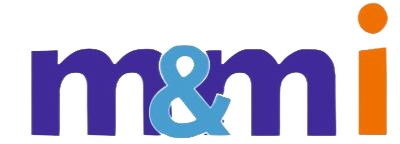SMM for Promoting Healthy Eating: Bibliometric Analysis
- Sumy State University, Ukraine
- WSB University in Dabrowa Gornicza, Poland
* Corresponding author
Pages: 113–126
Received: 10 April 2024
Revised: 15 November 2024
Accepted: 20 December 2024
Abstract
This article summarizes the arguments and counterarguments within the scientific discussion on the use of social media marketing (SMM) for promoting healthy eating. The main goal of the present study was to analyse the trends and effectiveness of SMM tools in the fields of healthy eating and human behaviour. The systematization of literary sources and approaches to solving the problem of promoting healthy eating has led to a significant increase in attention to interactive marketing strategies in recent years. The relevance of solving this scientific problem lies in the fact that healthy eating is an important component of public health, and SMM can become an effective tool for shaping appropriate habits among the population. The study of the use of SMM in this article is carried out in the following logical sequence: analysis of the literature, bibliometric analysis of publication dynamics and geography, identification of key trends and research clusters, and testing hypotheses about the influence of regional features and innovative SMM tools. The methodological toolkit of the study includes bibliometric analysis methods, with the research period spanning 1969–2024. The object of the study consists of scientific publications from the Scopus and Web of Science databases, as they provide the broadest understanding of global trends. The article presents the results of an empirical analysis of the dynamics of publication activity and key terms related to the research topic. This analysis revealed that over the past 5 years, increased attention has been given to the use of interactive SMM tools for promoting healthy eating. The study empirically confirms and theoretically proves that cultural and regional features influence the choice of marketing strategies in SMM and that innovative tools contribute to improving the effectiveness of such campaigns. The results of this study may be useful for marketers, public health researchers, and organizations involved in promoting a healthy lifestyle, as they allow for the adaptation of SMM strategies to cultural and regional characteristics. Moreover, the findings of this study may serve as a foundation for further research on the effectiveness of digital technologies in shaping healthy habits. The identified trends will promote the development of innovative approaches to healthy eating promotion through the use of personalized content.
Keywords: food habits; healthy eating; healthy food; promotion; SMM.
How to Cite: Ziabina, Ye., Kryvych, Ya., & Pigon, L. (2024). SMM for Promoting Healthy Eating: Bibliometric Analysis. Marketing and Management of Innovations, 15(4), 113–126. https://doi.org/10.21272/mmi.2024.4-09
Abstract Views
PDF Downloads
![]() This work is licensed under a Creative Commons Attribution 4.0 International License
This work is licensed under a Creative Commons Attribution 4.0 International License
References
- Arredondo, E. M., Elder, J. P., Ayala, G. X., Campbell, N., Baquero, B., & Duerksen, S. (2006). Is parenting style related to children’s healthy eating and physical activity in Latino families? Health education research, 21(6), 862–871. [Google Scholar] [CrossRef]
- Ashley, C., & Tuten, T. (2015). Creative strategies in social media marketing: An exploratory study of branded social content and consumer engagement. Psychology & marketing, 32(1), 15–27. [Google Scholar] [CrossRef]
- Cadario, R., & Chandon, P. (2020). Which healthy eating nudges work best? A meta-analysis of field experiments. Marketing Science, 39(3), 465–486. [Google Scholar] [CrossRef]
- Chan, N. L., & Guillet, B. D. (2011). Investigation of social media marketing: how does the hotel industry in Hong Kong perform in marketing on social media websites? Journal of Travel & Tourism Marketing, 28(4), 345–368. [Google Scholar] [CrossRef]
- Chang, Y. T., Yu, H., & Lu, H. P. (2015). Persuasive messages, popularity cohesion, and message diffusion in social media marketing. Journal of Business Research, 68(4), 777–782. [Google Scholar] [CrossRef]
- Chen, S. C., & Lin, C. P. (2019). Understanding the effect of social media marketing activities: The mediation of social identification, perceived value, and satisfaction. Technological forecasting and social change, 140, 22–32. [Google Scholar] [CrossRef]
- Cherkaoui, N., El Handri, K., Medard, D. Y, T., El Hassani, Y., & Errafyg, A. (2024). Consumer Behaviour: Analysing Marketing Campaigns through Recommender Systems and Statistical Techniques. Marketing and Management of Innovations, 15(3), 1–12. [Google Scholar][CrossRef]
- Chibotaru, L. F., Ungur, L., Aronica, C., Elmoll, H., Pilet, G., & Luneau, D. (2008). Structure, magnetism, and theoretical study of a mixed-valence CoII3CoIII4 heptanuclear wheel: lack of SMM behavior despite negative magnetic anisotropy. Journal of the American Chemical Society, 130(37), 12445–12455. [Google Scholar]
- Chygryn, O., Shevchenko, K., & Tuliakov, O. (2024). Neuromarketing as a mechanism of communication with the consumer: the case for small business. Marketing i menedžment innovacij, 15(2), 26–38. [Google Scholar] [CrossRef]
- Conner, M., Norman, P., & Bell, R. (2002). The theory of planned behaviour and healthy eating. Health psychology, 21(2), 194. [Google Scholar] [CrossRef]
- Cooke, L. (2007). The importance of exposure for healthy eating in childhood: a review. Journal of human nutrition and dietetics, 20(4), 294–301. [Google Scholar] [CrossRef]
- Croll, J. K., Neumark-Sztainer, D., & Story, M. (2001). Healthy eating: what does it mean to adolescents?. Journal of nutrition education, 33(4), 193-198. [Google Scholar] [CrossRef]
- De Vries, L., Gensler, S., & Leeflang, P. S. (2012). Popularity of brand posts on brand fan pages: An investigation of the effects of social media marketing. Journal of interactive marketing, 26(2), 83–91. [Google Scholar] [CrossRef]
- Dwivedi, Y. K., Ismagilova, E., Hughes, D. L., Carlson, J., Filieri, R., Jacobson, J., … & Wang, Y. (2021). Setting the future of digital and social media marketing research: Perspectives and research propositions. International journal of information management, 59, 102168. [Google Scholar] [CrossRef]
- Felix, R., Rauschnabel, P. A., & Hinsch, C. (2017). Elements of strategic social media marketing: A holistic framework. Journal of business research, 70, 118–126. [Google Scholar] [CrossRef]
- Godey, B., Manthiou, A., Pederzoli, D., Rokka, J., Aiello, G., Donvito, R., & Singh, R. (2016). Social media marketing efforts of luxury brands: Influence on brand equity and consumer behavior. Journal of business research, 69(12), 5833–5841. [Google Scholar] [CrossRef]
- Google Trends (2024). [Link]
- Guenther, P. M., Casavale, K. O., Reedy, J., Kirkpatrick, S. I., Hiza, H. A., Kuczynski, K. J., … & Krebs-Smith, S. M. (2013). Update of the healthy eating index: HEI-2010. Journal of the Academy of Nutrition and Dietetics, 113(4), 569–580. [Google Scholar] [CrossRef]
- Guenther, P. M., Kirkpatrick, S. I., Reedy, J., Krebs-Smith, S. M., Buckman, D. W., Dodd, K. W., … & Carroll, R. J. (2014). The Healthy Eating Index-2010 is a valid and reliable measure of diet quality according to the 2010 Dietary Guidelines for Americans. The Journal of nutrition, 144(3), 399–407. [Google Scholar] [CrossRef]
- Guenther, P. M., Reedy, J., & Krebs-Smith, S. M. (2008). Development of the healthy eating index-2005. Journal of the American Dietetic Association, 108(11), 1896–1901. [Google Scholar] [CrossRef]
- Hasbullah, N. N., Kiflee, A. K. R., Anwar, S., & Ramachandran, K. K. (2024). Mapping the trend of digital transformation in omni-channel retailing: a bibliometric analysis. Marketing i menedžment innovacij, 15(1), 29–40. [Google Scholar] [CrossRef]
- Hesketh, K., Waters, E., Green, J., Salmon, L., & Williams, J. (2005). Healthy eating, activity and obesity prevention: a qualitative study of parent and child perceptions in Australia. Health promotion international, 20(1), 19–26. [Google Scholar] [CrossRef]
- Huynh, Q. L. (2024). Ranking the importance of marketing strategies in building client loyalty. Marketing i menedžment innovacij, 15(2), 1–12. [Google Scholar] [CrossRef]
- Kim, A. J., & Ko, E. (2010). Impacts of luxury fashion brand’s social media marketing on customer relationship and purchase intention. Journal of Global fashion marketing, 1(3), 164–171. [Google Scholar] [CrossRef]
- Kim, A. J., & Ko, E. (2012). Do social media marketing activities enhance customer equity? An empirical study of luxury fashion brand. Journal of Business research, 65(10), 1480-1486. [Google Scholar] [CrossRef]
- Krebs-Smith, S. M., Pannucci, T. E., Subar, A. F., Kirkpatrick, S. I., Lerman, J. L., Tooze, J. A., … & Reedy, J. (2018). Update of the healthy eating index: HEI-2015. Journal of the Academy of Nutrition and Dietetics, 118(9), 1591–1602. [Google Scholar] [CrossRef]
- Li, F., Larimo, J., & Leonidou, L. C. (2021). Social media marketing strategy: definition, conceptualization, taxonomy, validation, and future agenda. Journal of the Academy of Marketing Science, 49, 51–70. [Google Scholar] [CrossRef]
- Lipsman, A., Mudd, G., Rich, M., & Bruich, S. (2012). The power of “like”: How brands reach (and influence) fans through social-media marketing. Journal of Advertising research, 52(1), 40–52. [Google Scholar]
- Liu, X., Shin, H., & Burns, A. C. (2021). Examining the impact of luxury brand’s social media marketing on customer engagement: Using big data analytics and natural language processing. Journal of Business research, 125, 815–826. [Google Scholar] [CrossRef]
- McGill, R., Anwar, E., Orton, L., Bromley, H., Lloyd-Williams, F., O’Flaherty, M., … & Capewell, S. (2015). Are interventions to promote healthy eating equally effective for all? Systematic review of socioeconomic inequalities in impact. BMC public health, 15, 1–15. [Google Scholar] [CrossRef]
- Michaelidou, N., Siamagka, N. T., & Christodoulides, G. (2011). Usage, barriers and measurement of social media marketing: An exploratory investigation of small and medium B2B brands. Industrial marketing management, 40(7), 1153–1159. [Google Scholar] [CrossRef]
- Michie, S., Abraham, C., Whittington, C., McAteer, J., & Gupta, S. (2009). Effective techniques in healthy eating and physical activity interventions: a meta-regression. Health psychology, 28(6), 690. [Google Scholar] [CrossRef]
- Michie, S., Ashford, S., Sniehotta, F. F., Dombrowski, S. U., Bishop, A., & French, D. P. (2011). A refined taxonomy of behaviour change techniques to help people change their physical activity and healthy eating behaviours: the CALO-RE taxonomy. Psychology & health, 26(11), 1479–1498. [Google Scholar] [CrossRef]
- Mozaffarian, D., Angell, S. Y., Lang, T., & Rivera, J. A. (2018). Role of government policy in nutrition—barriers to and opportunities for healthier eating. BMJ, 361. [Google Scholar] [CrossRef]
- Musat, G. C., Petcu, D., Georgescu, A., Florin, C., Georgescu, A., Popa, D. A. T., … & Barna, O. (2021). Influence of social media marketing on nutrition and physical activity behaviors of Romanian Generation Z students. Progress in Nutrition, 23(2). [Google Scholar]
- Nadason, S., Vasudevan, H., & Cheok, M. Y. (2024). The mediating effect of customer loyalty on the relationships among supply chain performance, inventory management and quality management. Marketing i menedžment innovacij, 15(1), 67–79. [Google Scholar] [CrossRef]
- Nielsen, M., Lundegaard, C., & Lund, O. (2007). Prediction of MHC class II binding affinity using SMM-align, a novel stabilization matrix alignment method. BMC bioinformatics, 8, 1–12. [Google Scholar] [CrossRef]
- Ocel, Y., Mutlu, H. T., & Bayat, M. (2023). Determination of the Relationship Between Lifestyle and Impulsive Purchasing Behaviour. Marketing and Management of Innovations, 14(3), 37–55. [Google Scholar] [CrossRef]
- Oe, H., & Yamaoka, Y. (2023). Smart Luxury Shoppers’ Behaviour in China: Omni-Channel Perspectives of Gen Y Consumers. Marketing and Management of Innovations, 14(3), 176–187. [Google Scholar] [CrossRef]
- Onem, S., & Selvi, M. S. (2024). General attitude scale for social media influencers. Marketing i menedžment innovacij, 15(2), 122–139. [Google Scholar] [CrossRef]
- Pierce, J. P., Natarajan, L., Caan, B. J., Parker, B. A., Greenberg, E. R., Flatt, S. W., … & Stefanick, M. L. (2007). Influence of a diet very high in vegetables, fruit, and fibre and low in fat on prognosis following treatment for breast cancer: the Women’s Healthy Eating and Living (WHEL) randomized trial. Jama, 298(3), 289–298. [Google Scholar]
- Reedy, J., Lerman, J. L., Krebs-Smith, S. M., Kirkpatrick, S. I., Pannucci, T. E., Wilson, M. M., … & Tooze, J. A. (2018). Evaluation of the healthy eating index-2015. Journal of the Academy of Nutrition and Dietetics, 118(9), 1622–1633. [Google Scholar] [CrossRef]
- Samdal, G. B., Eide, G. E., Barth, T., Williams, G., & Meland, E. (2017). Effective behaviour change techniques for physical activity and healthy eating in overweight and obese adults; systematic review and meta-regression analyses. International Journal of Behavioral Nutrition and Physical Activity, 14, 1–14. [Google Scholar] [CrossRef]
- Schwartz, C., Scholtens, P. A., Lalanne, A., Weenen, H., & Nicklaus, S. (2011). Development of healthy eating habits early in life. Review of recent evidence and selected guidelines. Appetite, 57(3), 796–807. [Google Scholar] [CrossRef]
- Schwingshackl, L., & Hoffmann, G. (2015). Diet quality as assessed by the Healthy Eating Index, the Alternate Healthy Eating Index, the Dietary Approaches to Stop Hypertension score, and health outcomes: a systematic review and meta-analysis of cohort studies. Journal of the Academy of Nutrition and Dietetics, 115(5), 780–800. [Google Scholar] [CrossRef]
- Schwingshackl, L., Bogensberger, B., & Hoffmann, G. (2018). Diet quality as assessed by the healthy eating index, alternate healthy eating index, dietary approaches to stop hypertension score, and health outcomes: an updated systematic review and meta-analysis of cohort studies. Journal of the Academy of Nutrition and Dietetics, 118(1), 74–100. [Google Scholar] [CrossRef]
- Scopus (2024) [Link]
- Seo, E. J., & Park, J. W. (2018). A study on the effects of social media marketing activities on brand equity and customer response in the airline industry. Journal of Air Transport Management, 66, 36–41. [Google Scholar] [CrossRef]
- Shan, Z., Li, Y., Baden, M. Y., Bhupathiraju, S. N., Wang, D. D., Sun, Q. I., … & Hu, F. B. (2020). Association between healthy eating patterns and risk of cardiovascular disease. JAMA internal medicine, 180(8), 1090–1100. [Google Scholar]
- Shareef, M. A., Mukerji, B., Dwivedi, Y. K., Rana, N. P., & Islam, R. (2019). Social media marketing: Comparative effect of advertisement sources. Journal of Retailing and Consumer Services, 46, 58–69. [Google Scholar] [CrossRef]
- Shepherd, J., Harden, A., Rees, R., Brunton, G., Garcia, J., Oliver, S., & Oakley, A. (2006). Young people and healthy eating: a systematic review of research on barriers and facilitators. Health education research, 21(2), 239–257. [Google Scholar] [CrossRef]
- Stare, F. J., & Dwyer, J. (1969). An eye to the future: healthy eating for teenagers. Journal of School Health, 39(9), 595–599. [Google Scholar] [CrossRef]
- Stephen, A. T. (2016). The role of digital and social media marketing in consumer behavior. Current opinión in Psychology, 10, 17–21. [Google Scholar] [CrossRef]
- Story, M., Nanney, M. S., & Schwartz, M. B. (2009). Schools and obesity prevention: creating school environments and policies to promote healthy eating and physical activity. The Milbank Quarterly, 87(1), 71–100. [Google Scholar] [CrossRef]
- Kennedy, E. T., Ohls, J., Carlson, S., & Fleming, K. (1995). The Healthy Eating Index: design and applications. Journal of the American Dietetic Association, 95(10), 1103–1108. [Google Scholar] [CrossRef]
- Verplanken, B., & Faes, S. (1999). Good intentions, bad habits, and effects of forming implementation intentions on healthy eating. European journal of social psychology, 29(5-6), 591–604. [Google Scholar] [CrossRef]
- VOSviewer (2024) [Link]
- Wang, Z., & Kim, H. G. (2017). Can social media marketing improve customer relationship capabilities and firm performance? Dynamic capability perspective. Journal of Interactive marketing, 39(1), 15–26. [Google Scholar] [CrossRef]
- Web of Science (2024) [Link]
- Wechsler, H., Devereaux, R. S., Davis, M., & Collins, J. (2000). Using the school environment to promote physical activity and healthy eating. Preventive medicine, 31(2), 121–137. [Google Scholar] [CrossRef]
- Willett, W. C., Sacks, F., Trichopoulou, A., Drescher, G., Ferro-Luzzi, A., Helsing, E., & Trichopoulos, D. (1995). Mediterranean diet pyramid: a cultural model for healthy eating. The American journal of clinical nutrition, 61(6), 1402S–1406S. [Google Scholar] [CrossRef]
- Zhu, Y. Q., & Chen, H. G. (2015). Social media and human need satisfaction: Implications for social media marketing. Business horizons, 58(3), 335–345. [Google Scholar] [CrossRef]
- Zouaoui, R., & Hamdi, R. (2024). The Impact of Online Advertising on Store Visiting: Saudi Arabia. Marketing and Management of Innovations, 15(1), 56–66. [Google Scholar] [CrossRef]
View articles in other formats
License
![]() This work is licensed under a Creative Commons Attribution 4.0 International License
This work is licensed under a Creative Commons Attribution 4.0 International License
Coyright
Copyright (c) 2024 The Author(s).
Published by Sumy State University
Issue



